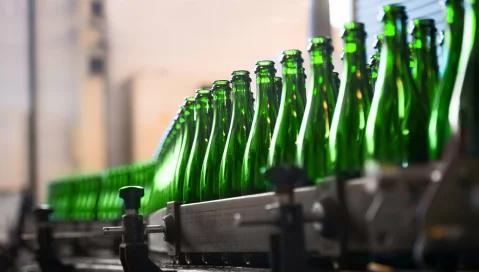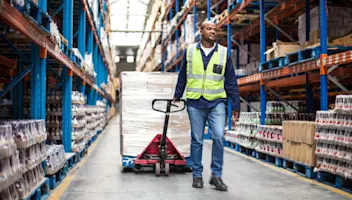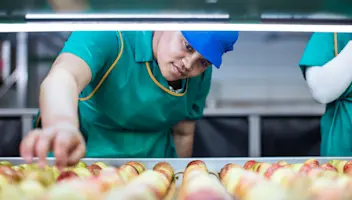What Is Premiumization and How Is It Shaping the Beverage Industry?
What Is Premiumization and How Is It Shaping the Beverage Industry?
What Is Premiumization and How Is It Shaping the Beverage Industry?
29 Mars 2021
Jack Payne
Over recent years, the entire food and beverage industry has seen a consumer demand trend in the direction of more “premium” products. Characterized by an increased focus on flavor, high-quality ingredients and more appealing packaging, premiumization has had a big impact on the type of products shoppers are seeking out.
Premiumization has been an especially significant factor in the beverage industry, with the proliferation of budget options making premium products more appealing, and consumers likely to treat drinks as something worth spending a little extra on. All indicators are that this trend will actually accelerate in 2021 and beyond.
In this blog, we explain what premiumization looks like in the beverage sector, why exactly it continues to be such a strong influence and what manufacturers can do to produce competitive premium products.
Premiumization in the Beverage Industry
You may be familiar with the premiumization trend in the alcoholic beverage sector, but it is popular for soft drinks too. Let’s take a look at both.
Alcoholic Drinks
The rise of craft beer and spirits has propelled premium-level alcohol into the mainstream. While premium wine options have been commonplace for many years, the widespread success of higher-quality beer and spirits has accounted for most of the recent growth in premium alcohol sales—with consumers increasingly willing to try something new. Given the relative rarity of consumption (compared with soft drinks), quality is king when it comes to alcoholic drinks.
This trend shows no sign of slowing. IWSR Drinks Market Analysis estimates that the market share of premium or “super-premium” alcoholic drinks will grow to 13% by 2024. Meanwhile, GlobalData reports that over 40% of consumers buy premium/luxury alcoholic drinks at least occasionally. This represents a sizable audience for you to target if you can produce the right products.
Soft Drinks
It may surprise you that even more consumers buy premium non-alcoholic drinks—52% according to GlobalData. An Inside Drinks trends report highlights “experience-driven” products as particularly lucrative in the premium soft drinks sector. This means brands creating convincingly authentic products with an element of storytelling around them are more likely to succeed in what is a packed market.
The fact that more and more consumers are seeking sugar-free or reduced-sugar products also presents an opportunity for premium soft drinks to find a niche. GlobalData found that 43% of consumers are actively looking to reduce their sugar consumption. Brands that can bring great-tasting soft drinks with a low sugar content to market stand a good chance of success.
What is Driving Premiumization?
While there has always been an appetite for premium beverages, the sector has undeniably enjoyed a boom over recent years. There are a number of reasons behind this continued growth that you must understand if you are to capture a share of the market.
Millennials are making new demands. The general consensus is that younger drinkers are the key drivers of premiumization. 54% of 18-34 year olds are likely to choose a premium drink versus just 35% of those over 55. Millennials are known for their greater desire for authentic, high-quality and ethical products, and as their spending power continues to grow, so will their influence in the drinks market.
Consumers are increasingly concerned about health. Wider trends in the food and beverage industry are seeing more of us prioritize our health when buying products. The beverages industry is no different—and this trend is opening up opportunities for low-sugar soft drinks and alcohol-free alternatives to beer and wine in particular.
COVID-19 is keeping us at home. With coronavirus lockdowns preventing people from visiting bars and pubs for months at a time, consumers are looking to treat themselves more while drinking at home. But even with a return to normality hopefully around the corner, the appetite for premium drinks looks set to stay—fueled by months of enforced saving.
Incomes are growing globally. In the fastest-growing markets like China and India, a burgeoning middle class is keen to access higher-quality beverages. For example, China is now the world’s biggest market for premium wines and liqueurs. Globalization is also playing a huge role in this growth, with established Western trends like demand for premium alcohol spreading to new markets.
Consumers are drinking less alcohol. It’s true. Up to 20% of adults in the UK now don’t drink at all, with 47% of drinkers having cut back their consumption. This has led to greater willingness to spend extra on the drinks people do consume, presenting opportunities for premium products in both the alcoholic and soft drink markets.
How Can Businesses Adapt Production to Incorporate More Premium Products?
While beverage manufacturers have identified the need to bolster their premium offerings, the right strategy is needed to fully capitalize on the rise of premiumization. For instance, GlobalData reports that:
42% of consumers associate “craft” drinks with being made by hand
42% of consumers associate “craft” drinks with high quality ingredients
39% of consumers associate “craft” drinks with authenticity
Clearly, resources need to be devoted to sourcing high-quality ingredients, and time needs to be devoted to perfecting the right flavors. But equally as important is how this quality is conveyed to the end consumer.
The premium drinks market is now very crowded. While the best products will ultimately develop a loyal customer base, capturing interest is vitally important—making packaging especially crucial. Premium drinks need premium labels, corks and bottle caps to match. Perfecting the bottle or can volume also plays a big role, with many shoppers looking to purchase premium beverages in smaller quantities.
Premiumization isn’t going anywhere in the beverage industry, and manufacturers need to embrace it. Our purpose-built food and beverage solution - Aptean Food & Beverage ERP - helps beverage companies like you find the best recipes and combinations for success in the premium drinks market. Discover how Aptean can help your beverage business by contacting us today!
Food Insights


Prêt à transformer votre entreprise ?
Nous avons les solutions ERP spécialisées dont vous avez besoin pour relever les défis de votre secteur.






